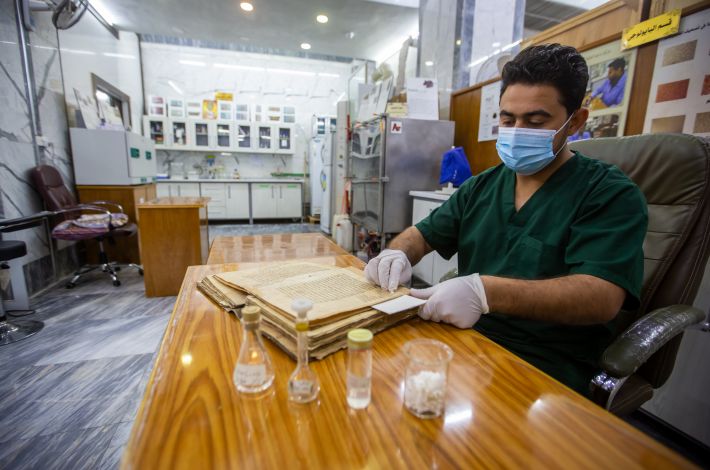The Manuscript Restoration Center of the Al-Abbas's (p) Holy Shrine includes a number of departments that work together to preserve, restore and maintain the manuscript heritage by modern scientific methods, and preserve the manuscript from rotting and damages resulting from aging time, weather conditions and human interference.
The chemical laboratory is one of the most important pillars of this center and is the focal point for the rest of the manuscript restoration phases.
The director of the center, Mr. Laith Lutfi, explained to Al-Kafeel Network: “This is one of the most important departments in the center, where everything that is in the old manuscripts is analyzed, and the basic materials involved in the restoration process are prepared. The restoration work depends entirely on the chemical laboratory that is run by professionals and specialists in this field, who have experience in scientific and practical dealing, whether with chemicals despite their danger, or with the manuscript."
He explained, "The work in the laboratory is on two aspects, one of which is complementary to the work of the other:
The first aspect: analysis, detection and examination. It includes:
- A comprehensive examination of writing inks, stamps, and various colors, whether decoration or text layout.
- A test for the consistency of the skin fibers.
- Methods for analyzing and treating gilding chemically, and knowing the chemical composition of gilding, and the adhesives used in it.
- Measurement the PH of the pages and methods of reducing this acidity if required.
The second aspect: preparing the various materials needed in the restoration process, including:
- Material for fixing seals and inks, if necessary.
- ISO colors used in the process of dyeing paper pulp, and dyeing natural paper by hand.
- Adhesives that go into all repair stages.
- The dyed pulp used in the restoration of pages.
- The liquid soap substance for the process of washing the manuscript.
- Anti-acidity substances, if required.
- Support materials for paper when spraying or washing.
- Choosing the appropriate organic material to be used in the manuscript sterilization process, in the event that the manuscripts are infected with microorganisms.
- Lubricants and moisturizers for old and stiff leather.
- Preparation of some natural colors and inks."





